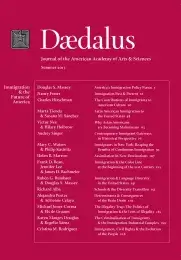Why Asian Americans are Becoming Mainstream
In contrast to earlier waves of immigration, the post–1965 Asian immigration to the United States has not spawned an exclusionist backlash among native whites. Rather, the new Asian immigrants and their children are rapidly gaining access to the American mainstream. Whether in integrated residential communities, in colleges and universities, or in mainstream workplaces, Asian Americans’ presence is ever more the rule, not the exception. The success of so many Asian American immigrants suggests that race may not be as decisive a factor in shaping socioeconomic attainment as it was in the American past; civil rights reform has been incorporated in a more inclusive American mainstream. As a group in which those of legal status predominate, Asian Americans have enjoyed more open access to mainstream institutions, paving the way to their rapid assimilation.
Until 1965, immigration from Asia served as the crucible for a politics of exclusion that involved both the legal framework and a social consensus backing a national-origin quota for immigration. In the mid-nineteenth century, the arrival of a sizable Chinese population in communities across the western states provoked widespread nativist sentiment and anti-Chinese hostility. Competition in labor markets spurred union-led protests and violent demands for the government to restrict Chinese immigration. The subsequent passage of the Chinese Exclusion Act of 1882 effectively ended immigration from China, while Chinese residing in America were barred from naturalized citizenship. Japanese immigration to the West Coast, which followed the exclusion of Chinese laborers, incited similar mobilization of nativist sentiment and legislative politics, culminating in the Immigration Act of 1924. This legislation limited free immigration to the United States to those from Northern and Western Europe, with restrictive quotas set for Southern and Eastern Europeans. Immigration . . .
